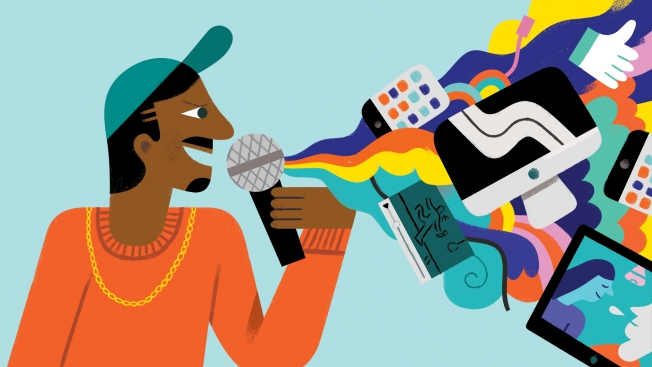Hip hop artists don’t shy away from talking about their favorite brands. From Adidas to Gucci to Mercedes, famous brands have often ended up in famous lyrics. But a lot has changed since the days of old-school MCs dreaming about making it big. Hip hop today is serious business, and leading brands know that tapping into hip hop culture is one of the most powerful ways to reach consumers across different digital channels.
Whether it’s rappers talking about a brand or a brand discovering the power of marketing through hip hop, artist-brand relationships tend to work like this: Once an artist signs on with a brand—sneakers, for example—this immediately opens the door to a broad array of marketing channels. The artist can wear the brand’s products on stage and in videos streamed millions of times on Vevo. The brand in turn can post videos about the artist’s life on its YouTube channel and other feeds with the hope that some of the hip hop cred will rub off on the company. The artist, meanwhile, can leverage his or her own social streams and put up photos featuring a brand’s products on Facebook, Twitter, Instagram and Snapchat.
Adidas is a great example of how things have come full circle. Once merely an athletic brand, today Adidas even sells shoes that are designed by hip hop stars—a smart way to bring the fashion and music worlds together. Soda brand Sprite puts hip hop lyrics right on its cans and sponsors hip hop concerts featuring the industry’s biggest stars. And its no surprise that these kinds of cultural integrations have been so successful for brands—a 2014 Adobe Benchmark Survey found that marketing campaigns with a media and entertainment focus allow brands to better complete their customer profiles and forecast results, in large part due to their common interests with an artist or athlete.
As every good DJ knows, it’s not just about how many different beats you use, but rather how they come together and build on one another. Marketers at Adidas, Sprite, FUBU and Hennessy aren’t trying to inundate every channel all the time. Rather, they are using data to see what’s working where—and then using this information to further improve other channels. These brands are part of a lucky few—less than a quarter of marketers use self-learning technologies or A/B testing to gain more knowledge about the customer from their various channels, per Adobe.
Does hip hop marketing drive more sales when an artist tweets about products or when an artist posts a video on YouTube? Is it effective to mention products in event promotions carried out through Live Nation? The only way to get answers to these critical questions is to look at the data. Sure, hip hop can give a brand an element of street cred and generate conversations on different platforms, but, when you’re paying tens of millions of dollars to hip hop stars, you’ve got to get the most out of their endorsement.
The challenge is that there’s so much data. With so many different channels now in play, thousands of conversations are taking place at once. And nearly two-thirds of marketers struggle with leveraging multiple third-party data sources, or implementing a process to ensure the quality of that data, according to Adobe. So even though data reveals what fans are most passionate about, it’s of little use to Adidas or Sprite or any other brand if they don’t have the technology to glean insights and get a coherent view of the customer. Otherwise, it’s all just noise—poor lyrics that will never quite rhyme.
It’s funny in a way: Who would have thought that brands would be dreaming about hip hop stars rather than the other way around? But, as the brands might have learned from listening to the lyrics, at the end of the day, you’ve got to know your business. For today’s brands, that means not just cross-channel marketing but smart, well-rhymed cross-channel marketing.









